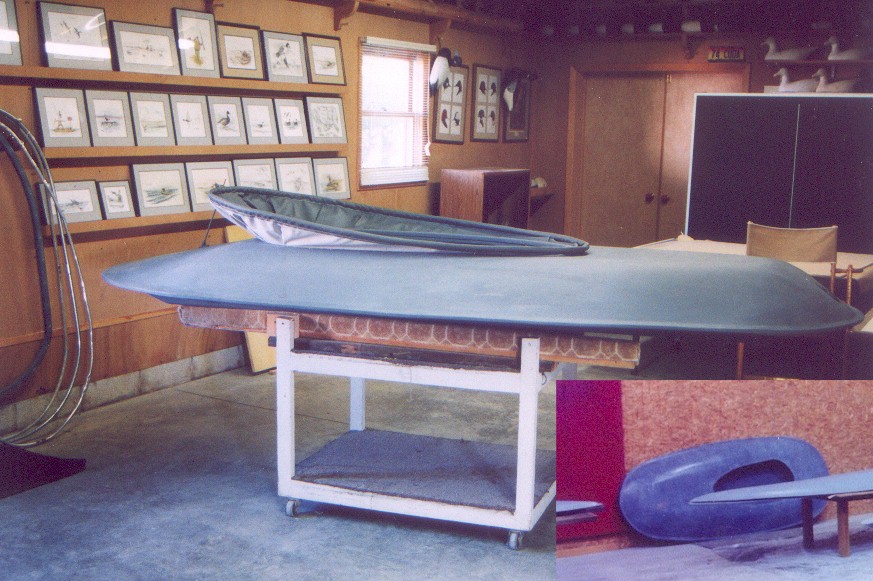

Prior to getting the hunter into the layout, he should have a life jacket on ? this transfer often takes place over cold water, and in poor weather conditions. Using heavy stainless steel snaps makes for easy handling in the cold as well as long lasting hardware. The purpose is to allow the single anchor line to attach to the two connection points available on many layouts, and distribute the anchor load between them. Pulling the toe of the layout a little to the left will do the same for a left-handed shooter.īetween the upwind anchor line and the boat itself is usually a bridle, which looks like a Y with a clip at each end. Pulling the downwind end of the layout to the right will give a right-handed shooter a more natural point of aim directly downwind of the layout. Some hunters will use the downwind anchor to pull the bottom of the boat in one direction a little. A dark color for this line is ideal since approaching birds will be able to see it. The downwind anchor can be clipped to a bolt under the layout, or tied to a cleat on the deck. This is sufficient to stop any swing, while allowing for easy adjustment during a hunt. Many hunters will use a short line and a mushroom style anchor. The purpose of the downwind line is to stop the layout from swinging into the decoys nearby. The downwind anchor line can be much shorter and the anchor can have less holding power. Adding a length of chain between the anchor and line will help keep the pull horizontal, as well as provide chafe protection for the line.
Layout boat free#
This lets the load on the anchor be applied in a horizontal plane ? too much vertical pull will cause an anchor to pull free from the bottom. The upwind anchor line should be approximately 3-5 times the water depth.

Rocky or grassy bottoms may require a different anchoring system.

A Danforth-style anchor is usually good for sandy, clay or muddy bottoms, and when paired with a length of chain can hold a layout easily. The upwind anchor should be of sufficient design and weight to work well on the bottom surfaces common where the hunter will be. Multipurpose boats are probably better suited for those hunting in shallow water where the hunter can stand if a problem arises.Īnchoring a layout in open water usually consists of 5 parts in addition to the boat itself: upwind anchor, upwind anchor line, layout bridle, boat, downwind anchor line, and downwind anchor. In addition, they are typically less stable than a wider pumpkinseed design. This design gives these boats a good load capacity, but makes it harder to hide their higher profile. Multi-purpose boats can be used successfully for layout hunting, but their shape is typically not conducive to hunting in rougher conditions, since they are narrower (good for paddling, bad for stability) and have higher, more canoe-like sides. This can be kept down until the spray from wind and waves is a problem, when the skirt can be raised and held in place with a wooden block or strut. Pumpkinseed design boats will sometimes have a spray shield or skirt that is connected to the edge of the cockpit. This gives a great and stable shooting platform, and also makes it much easier to get into and out of these boats while on the water. In addition, the boat can be very stable due to a large footprint on the water, reducing the amount the boat pitches due to waves or hunter movement. The advantage of this design is the lack of shadows cast by the boat, as well as providing a safe distance from the waterline to the cockpit edge. Most of these have a ?pumpkinseed? or similar shape to them. There are many different manufacturers that make purpose built layouts designed for open water. Layout boats come in several flavors ? commercially made purpose-built boats, commercially made multi-purpose boats, and home-made boats. Guys - the next ease let me know what needs to be adjusted.


 0 kommentar(er)
0 kommentar(er)
